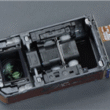Surge in Memory Prices: Micron and Industry Leaders Adjust Strategies
Summary:
- Major players in the memory market, including Micron, Samsung, and SK Hynix, are implementing significant price increases.
- Micron reports a remarkable revenue boost, with profits projected to rise sharply due to supply constraints.
- Anticipated capital expenditures are aimed at enhancing memory production capabilities.
The global memory chip market is experiencing a swift surge in prices, driven by supply chain constraints and increasing demand. Notably, industry giants like Samsung, SK Hynix, and Micron are all poised to raise their prices. Micron is leading the charge with expected increases ranging from 20% to 30%, particularly for automotive and industrial-grade memory products, which could see price hikes as high as 70%.
During a recent financial briefing, Micron’s Chief Commercial Officer, Sumit Sadana, highlighted a critical situation within the memory sector, indicating a significant shortage of available products for customers. This scarcity has not only affected supply chains but has also resulted in enhanced profit margins for the company.
In the fourth fiscal quarter, Micron reported an impressive revenue figure of $11.32 billion, marking a substantial year-on-year increase of 46%. Its annual revenue surged by 48% to reach $37.4 billion. This growth was bolstered by exceptional performance in high-bandwidth memory (HBM) and other advanced RAM cloud storage products, which skyrocketed by 213% compared to the previous year. Additionally, Micron’s net profit soared from $778 million last year to an impressive $8.5 billion—indicative of the robust demand outpacing supply.
Looking forward, Micron has set ambitious revenue expectations for the first quarter of fiscal year 2026, forecasting a target of approximately $12.5 billion, with a variance of plus or minus $300 million. This projected growth reflects the ongoing demand strain in the memory market. To facilitate this growth, Micron plans to allocate $18 billion in capital expenditures for the coming year—consistent with the previous year’s investment levels but significantly higher than the $13 billion spent the prior year.
The bulk of these investments will focus on enhancing memory production capabilities to meet growing market needs. As demand continues to outstrip supply, industry observers are closely monitoring how these price hikes will influence consumer markets and various tech sectors increasingly reliant on memory chips.
As the landscape evolves, stakeholders from manufacturers to end-users must navigate the implications of rising costs. While the immediate effect may be felt by consumers facing increased prices for devices reliant on these chips, the long-term consequences will shape technological advancement and innovation in the memory sector.
In summary, the memory chip market is undergoing a transformative phase characterized by significant price increases and a multi-faceted approach from leading companies like Micron. As production capabilities are enhanced and revenue targets climb, the industry is bracing for further changes that could reshuffle priorities across tech markets globally.
Staying informed and prepared for these shifts will be essential for various sectors from automotive to cloud computing, all of which are intertwined with memory technology advancements.







